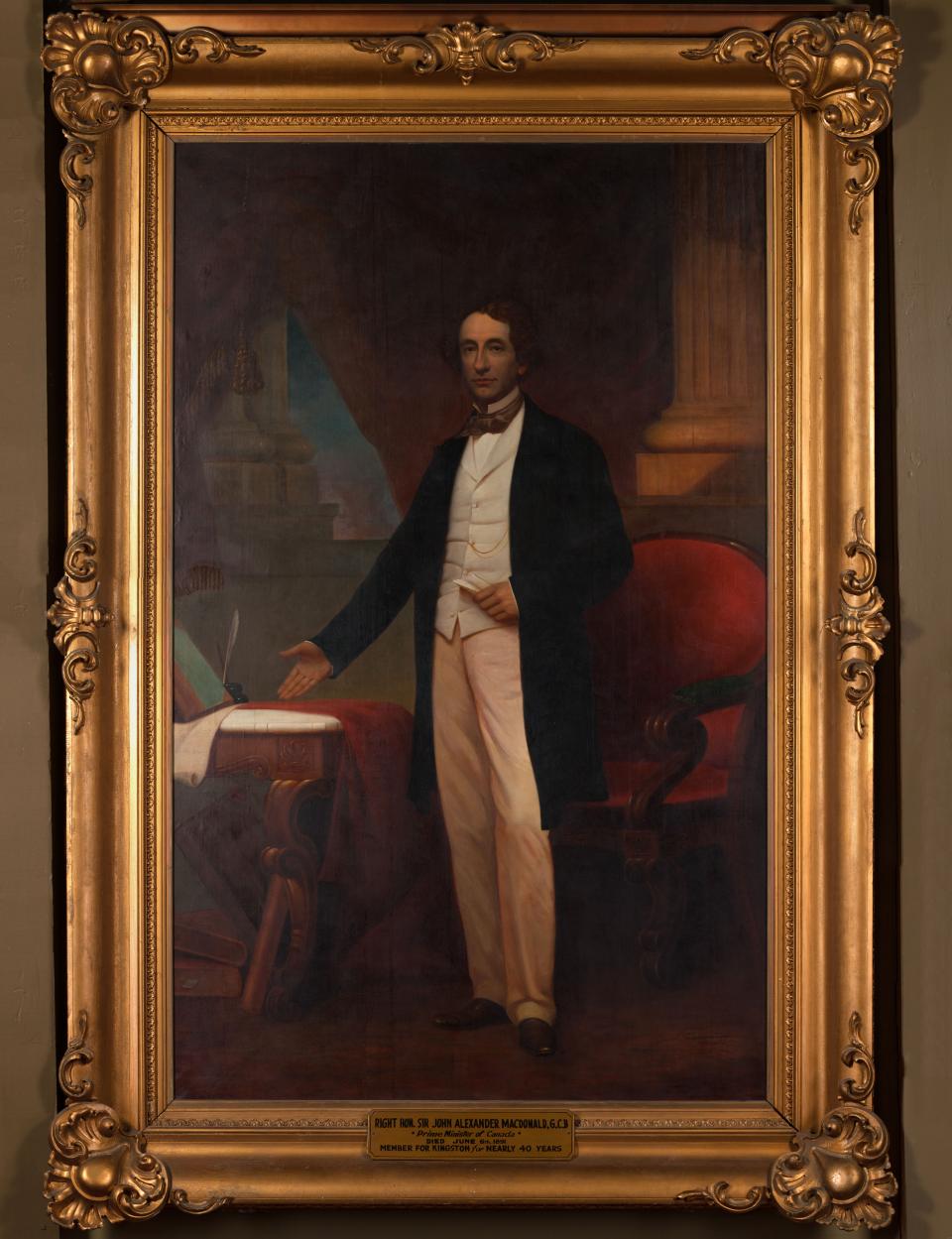
H 299.72 cm x W 203.2 cm x D 25.4 cm
A full length, over-life-sized portrait of Sir John A. Macdonald. He is standing in front of a red-upholstered chair with carved wooden arms and legs, and beside a carved wooden marble-topped table with books upon and below it. The figure stands at an oblique angle to the front of the picture plane, his left leg slightly forward and his right shoulder to the inside of the picture plane. His right arm is extended slightly outward and he is gesturing with his open right hand to an item on the table at his side. His left arm is bent with his hand raised to waist height, and he is holding a folded piece of paper in his hand. He gazes directly towards the viewer. The subject has thick curly brown hair parted at the side, and dark blue eyes. He is wearing tan trousers, an ivory waistcoat, a long dark blue-green topcoat, a white shirt with a stand-up collar, and a mauve cravat. In the right background is a fluted pillar; in the middle background is dark red drapery; and in the left background the bases of two additional fluted pillars and a blue sky tinged with pink are visible. The painting is signed "W. Sawyer / 1863" in dark brown paint in the lower right corner.
The painting is housed in a mid 19th century gilt wood and plaster frame. Plain back edge, ribbon and foliate outer edge, plain deep scotia; large anthemion corners with c-scrolls, small anthemion and c-scroll centres on hatched Grecian ogee top edge; astragal, acanthus bead, bevelled sight edge.
The first prime minister of Canada moved to Kingston from Glasgow, Scotland in 1820 when he was five years old. John A. Macdonald began articling at the age of fifteen and opened his own law office in Kingston when he was just twenty. During the Rebellion of 1837 he served with the local defence militia. In 1843 Macdonald won a seat on Kingston Town Council. The following year he was elected Kingston’s Member of Parliament, a post he held for most of his remaining 47 years. Credited as a visionary that created Canada, Macdonald was not universally loved and his policy record continues to be reexamined today. But, when he died four months after the 1891 campaign, the outpouring of sentiment was enormous. Ten thousand passed by his coffin in City Hall, and hundreds followed the cortège as it wound its way to Cataraqui Cemetery.
